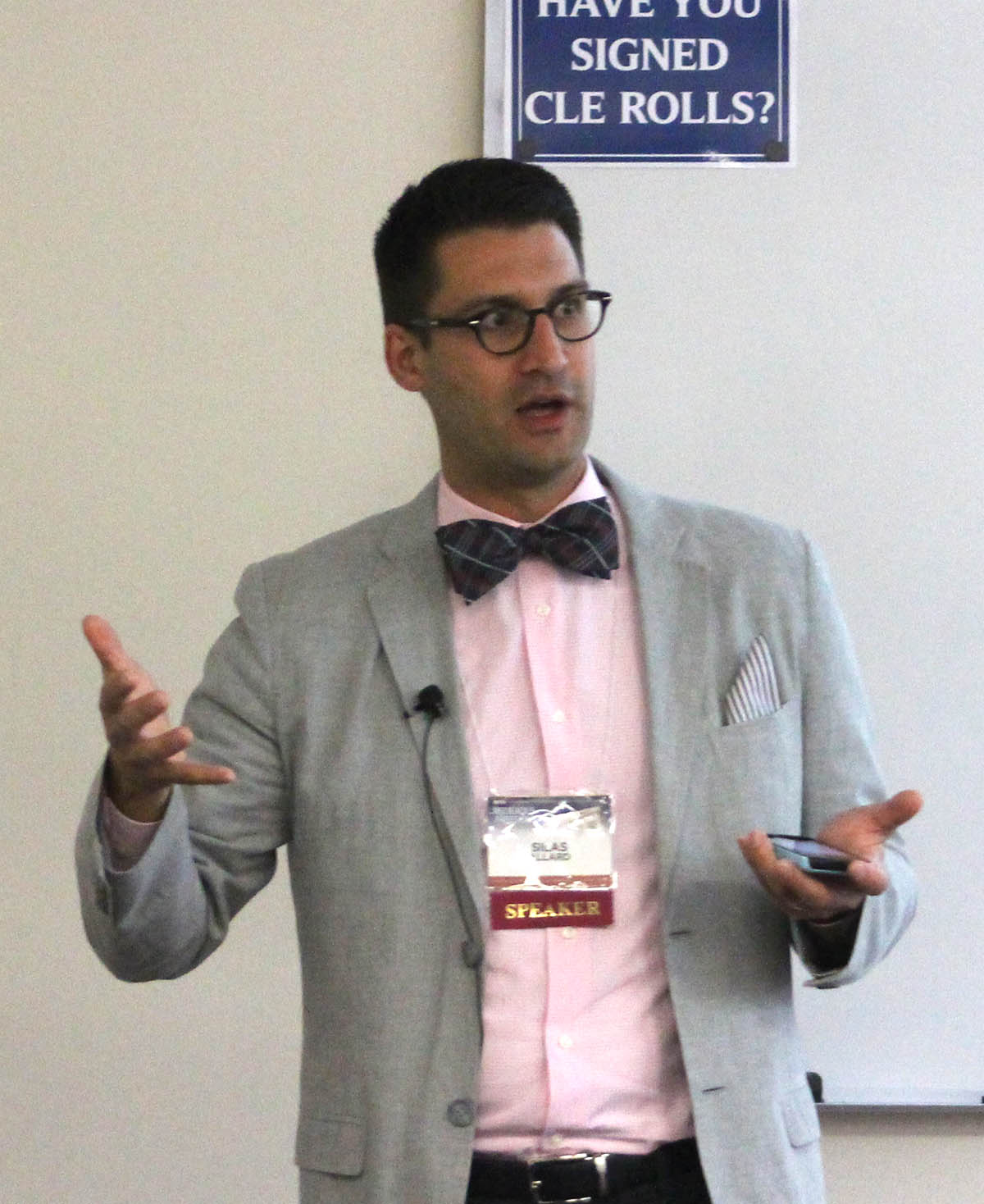Workshop: What does the Separation of Church and State Really Mean? The First Amendment’s Establishment Clause – Silas Allard

by Amy Andrus, 2017 ICLRS Student Fellow
Silas W. Allard, associate director of Emory University’s Center for the Study of Law and Religion, presented a workshop on religious expression in the public square entitled “What Does the Separation of Church and State Really Mean? The First Amendment’s Establishment Clause.”
Allard explained modern U.S. Supreme Court Establishment Cause jurisprudence in terms of two competing analytical frameworks that have existed since the Founding: separation and accommodation. Whereas separationists believe the purpose of the Establishment Clause is to keep religion and state as far apart as possible, accommodationists view religion as a necessary force in society through which moral and civic virtue and community identity are developed. Therefore, accommodationists are more willing to allow government support of religion to achieve these desirable social ends.
Allard explained that neutrality––a tenuous middle ground between separationist and accommodationist poles––is the watchword of modern Establishment Clause jurisprudence. In Lemon v. Kurtzman (1971), the U.S. Supreme Court established a three-pronged neutrality test whose factors generally must be met for a case to survive an Establishment Clause challenge. The challenged policy or law must (1) have a secular purpose, (2) have a primary effect that neither advances nor inhibits religion, and (3) foster no excessive entanglement between church and state.
Allard noted, however, that the Lemon Test has been subject to pulls between separationist and accommodationist poles, resulting in “strict neutrality” and “benevolent neutrality” lines of cases. Additionally, some Supreme Court justices have created their own factors and tests in determining neutrality. History and tradition constitute yet another factor considered by the Court. Allard explained that local history or tradition may help a practice survive an Establishment Clause challenge in religious display and legislative prayer cases, for example.
Allard reviewed a variety of areas where religion and state meet and discussed how the U.S. Supreme Court has dealt with those issues, including legislative prayer, religious displays in public spaces, religious organizations’ access to public spaces, and government funding of religious organizations.
Allard summarized by explaining that the Establishment Clause as interpreted today generally (1) prohibits the government from endorsing or advancing religion, (2) does not prohibit the government from engaging with religious organizations or prohibit all religious expression in public spaces, and (3) stipulates that the government be neutral among religions and between religion and nonreligion in areas such as government funding. However, Allard cautioned that Establishment Clause issues can be unpredictable. The Court’s use of different forms of analysis over the last several decades may lead to future Court decisions that move along the neutrality continuum toward one of the separationist and accommodationist poles.